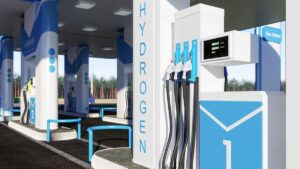GOT GAS? Australia has some challenging energy decisions to make

Australia has some weighty energy decisions to make. Pic: Ken Redding via Getty Images
The old adage that nothing worth doing is ever easy is certainly true when it comes to solving the gas issues which are plaguing Australia’s east coast.
Yet it might be the lack of stomach for making hard energy decisions that has put the east coast of Australia into the situation it now faces.
Decisions such as pulling the trigger on the gas reservation plans back when they were first introduced in 2017 or perhaps biting the bullet and giving the green light to new nuclear developments, a choice the opposition is quite cheekily trying to palm off to the new government.
It turns out also that Australian Energy Market Operator never had the power to procure and store gas in facilities across the east coast, a failing that has now been addressed following this week’s emergency meeting between Energy Minister Chris Bowen and his state and territory counterparts.
Other measures decided on included the final design of a capacity mechanism to guarantee investment in all forms of energy – including coal and gas but with a clear focus on renewables and energy storage technologies, and accelerating work on a national transition plan.
Steps in the right direction certainly but also energy decisions that will not have any short-term impact on the current high spot price for gas.
Yet while the politicians are playing the blame game about who is really responsible for the gas shortages, which Bowen has declined to call a crisis (and indeed it is not), this is the time to make the hard decisions that safeguard our energy security into the future.
Making the hard energy decisions
So what are some options that could be looked at?
While more electrical transmissions infrastructure is certainly welcome, it is not all that is needed.
Popular sources of renewable energy such as solar and wind have the flaw of not being able to provide reliable baseload power given that they are subject to the vagaries of the weather, low wind, or even nightfall.
As such what it needed is more energy storage infrastructure, be it batteries, pumped hydro, molten salt, or hydrogen.
The last is also expected to be a viable answer for the challenges that electric vehicles face in a commercial or industrial setting, namely the weight of batteries, the need for quick refuelling and range.
In the shorter term, we will still need natural gas to maintain baseload power for some time yet and in lieu of forcing gas reservation on east coast LNG exporters, new gas acreage releases and project approvals should still very much be on the cards – though some oversight on emissions might not go unwelcome.
What isn’t needed is government funding on new gas infrastructure that could potentially be obsolete within two to three decades. Let the market decide if it needs the infrastructure.
East coast LNG exporters also clearly have at least some spare capacity left after meeting their contract obligations, though one or two LNG cargos each month might not be enough to meet gas demand shortfalls
That said, those same cargoes will go a long way towards alleviating the crunch and should be more readily available, especially since the Australian Pipelines and Gas Association has rubbished claims that the pipelines from Queensland to the rest of the east coast are at full capacity.
And of course there’s nuclear… but that particular barrel of laughs might be a bridge too far even for a country with ample uranium resources and plenty of wide open spaces.
Related Topics

SUBSCRIBE
Get the latest breaking news and stocks straight to your inbox.
It's free. Unsubscribe whenever you want.
By proceeding, you confirm you understand that we handle personal information in accordance with our Privacy Policy.








